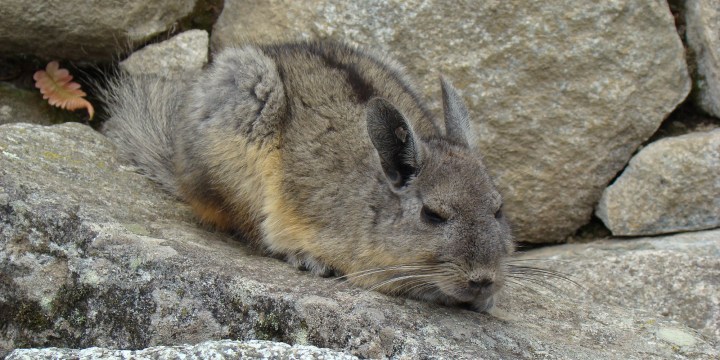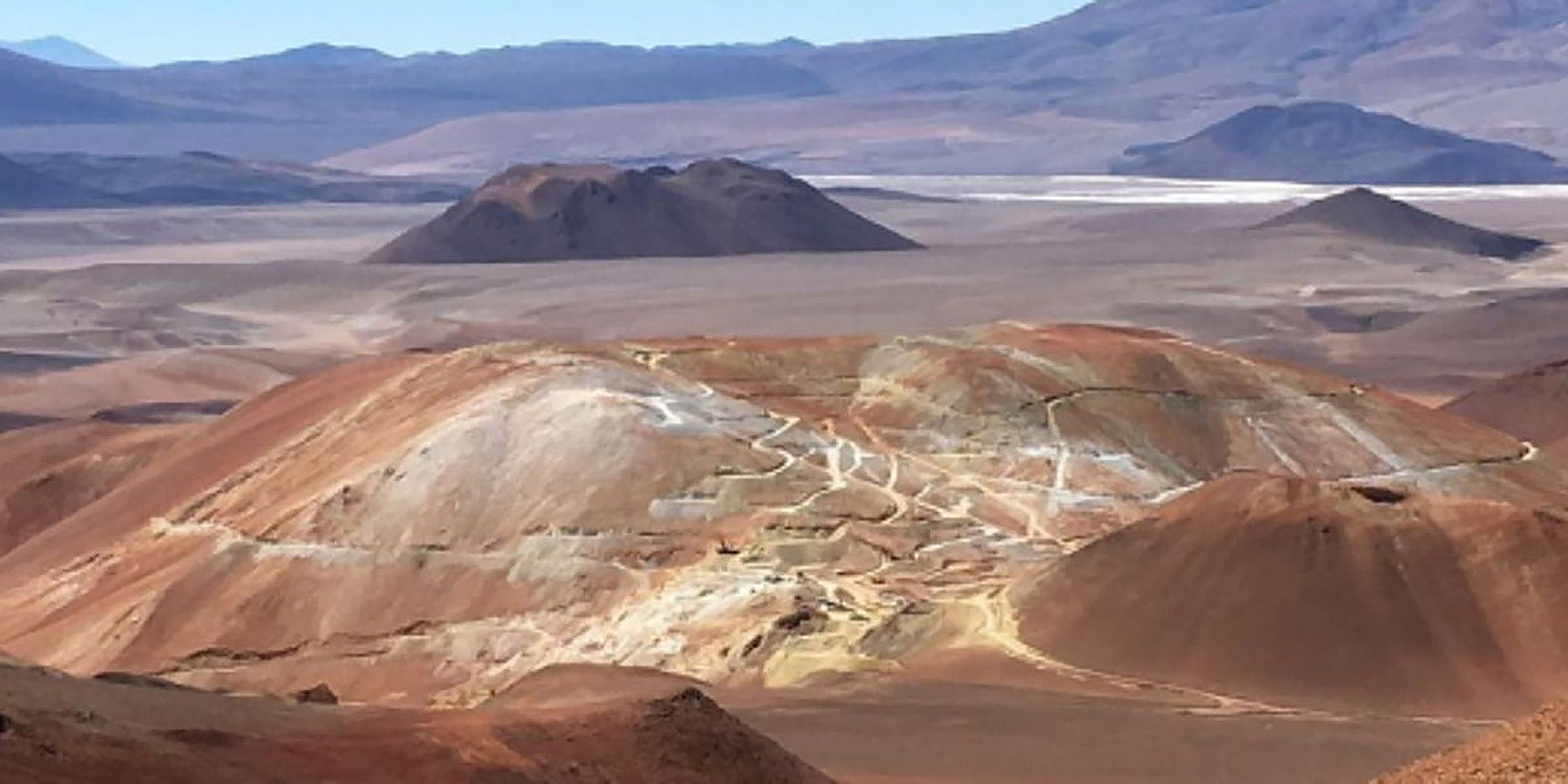MAVERICK INTERVIEW
Gold Fields’ Preece hopeful ‘Operation Chinchilla’ can restart soon at Chilean mine project

Gold Fields’ acting CEO, Martin Preece, is upbeat about restarting a stalled chinchilla relocation effort linked to its Salares Norte gold mine project high up in the Chilean Andes. He also reveals a couple of interesting details about the operation to re-home the furry rodents.
Gold Fields late in 2020 launched an operation to relocate a colony of about 25 highly endangered chinchillas, a type of rodent, whose home is near the miners’ Salares Norte gold project, which at the time had a price tag of $860-million (the mine, not the chinchillas).
The task did not seem arduous – chinchillas are rabbit-sized and not known for their ornery disposition. The plan involved luring the critters into live traps with bait, and then relocating them to enclosures to allow them to adapt to their new surroundings before their re-release into the wild.
This high-altitude project hit some unexpected turbulence after two of the four animals first ear-marked for relocation died in the process. The Chilean authorities halted the operation, and Gold Fields has been back at the drawing board ever since.
Construction of the mine has been allowed to proceed – that was never in doubt – with the main outstanding issue being that expansion of the pit might be uncertain if all of the animals had not been relocated in time. The overall project has since hit delays and cost overruns unrelated to the rodents, with the overall capital expenditure now forecast to be just more than $1-billion, the company said in its annual results on Thursday.
But the chinchillas’ fate is on the radar of conservationists and animal welfare activists, and so while the relocation is not seen as a threat to the $1-billion gold project, Gold Fields really wants to safely relocate the animals.
In an interview with Business Maverick, CEO Martin Preece said he was hopeful that Gold Fields’ new chinchilla plan would be accepted by the Chilean authorities.
“We have submitted our corrected plan to the regulator and we are waiting for feedback on that. Obviously, we need to get permission to continue … If permission is granted we would like recommence in September/October (springtime) with the programme,” he said.
“Operation Chinchilla” needs to be carried out at altitudes of between 3,900m and 4,700m above sea level. Living in such a hostile environment, the animal has evolved to grow a covetable coat of fur, which is why they were almost hunted to extinction.
“The average temperature at Salares is zero degrees, so that means September/October is still cold. We had a snowstorm up there two weeks ago; a blizzard. It’s a tough environment so we have very narrow windows,” Preece said. Indeed, unexpectedly foul winters have contributed to the delays in the project.
He said the new plan hinges on the length of time of the waiting period in the enclosures and monitoring in case the animals need medical intervention.
Visit Daily Maverick’s home page for more news, analysis and investigations
A chinchilla takes flight
On that front, this correspondent previously reported that one of the two surviving chinchillas – both have been successfully relocated – had suffered a serious leg injury but recovered.
Preece said the animal had been flown to Santiago for treatment from top-notch veterinarians – underscoring how the animal’s condition had alarmed Gold Fields.
“He has a monitoring device on him and he’s doing fine. I was there in December and he’s happy,” Preece said. A seasoned miner who is credited with turning around Gold Fields’ problematic South Deep operation in South Africa, Preece probably never envisioned that a rodent’s welfare would one day require his on-the-job attention.
And it seems that a chinchilla is probably not that hard to please.
“If you look at the terrain there, there’s clusters of rocks. It’s like a moonscape. And the chinchillas live in these clusters of rocks and you have to find another cluster of rocks that you can go and put them in,” Preece said.
“The ones that they have released get in there and do fine. In their lifetime, and I suppose because once they are outside the cluster of rocks they are vulnerable to predation, they don’t move out of a two to three hundred metre radius. We also have a nursery there growing grass species at some of the rockeries where we want to move them to, to enhance the environment.”
So, Gold Fields wants to move the animals to greener pastures, literally.
Preece also disclosed that the relocation effort was Gold Fields’ own initiative, not an initial demand from the government, which is how the company has framed the issue for years – and the regulator has never disputed this narrative.
Indeed, in late 2021, Chilean regulators launched sanctions proceedings against Gold Fields over the issue. If it was not an initial requirement, it certainly snowballed into one.
Read more in Daily Maverick: “Chilean regulator launches sanctions proceedings against Gold Fields over botched chinchilla relocation“
“As part of our environmental studies, the guys came across the population and we actually put the relocation plan into our EIA [Environmental Impact Assessment]. It was not a demand; we wanted to do it. When we submitted our application for the mining permit, we said we wanted to find a way to relocate them. We were proactive,” Preece said.
This underscores the point that mining exploration is uncovering isolated populations of endangered species. And in an age when ESG – environmental, social and governance – issues have the full attention of the boardroom and many investors, mining companies need to do right by the animals.
The price tag for Operation Chinchilla was initially put at $400,000, and while Gold Fields has not said if that goal post has shifted, one imagines it probably has – it had likely not budgeted for the return flight to Santiago.
The costs are hardly material, and Gold Fields can easily afford it. Its annual results for 2022 showed that normalised earnings fell 7% from the previous year – largely a function of gold prices on the one hand and cost inflation on the other – to $860-million.
So, the company is still making decent money, and shareholders received 47% of that $860-million in dividends, helped by a “break fee” Gold Fields got from its failed bid for Canadian miner Yamana. Having said that, its share price did fall 3.5% on Thursday – the rising costs of the Chilean project (which have nothing to do with the rodents) probably did not sit well with investors.
The turnaround at South Deep – the company’s last operational asset in South Africa – continues, with its adjusted free cash flow rising 47% to $129-million in 2022.
One imagines that a rodent could travel first class with that kind of dosh. But Gold Fields is no doubt hoping that it won’t have to fly any more chinchillas to Santiago. BM/DM/OBP




















 Become an Insider
Become an Insider
Comments - Please login in order to comment.